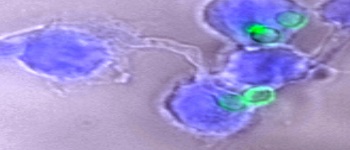Track Categories
The track category is the heading under which your abstract will be reviewed and later published in the conference printed matters if accepted. During the submission process, you will be asked to select one track category for your abstract.
Bioenergy is renewable energy made available from materials derived from biological sources. Biomass is any organic material which has stored sunlight in the form of chemical energy. As a fuel it may include wood, wood waste, straw, manure, sugarcane etc. Bio-products are the application of plant-derived resources as an alternative to non-renewable matter. This sustainable approach considers the entire product life cycle from its agricultural origin to its overall renewability. Bio based innovation in the production and content of commonly used items assures consumers of improved environmental well-being without compromising product performance.

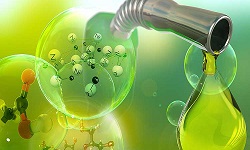
- Track 1-1Carbon Fibers
- Track 1-2Biofuels
- Track 1-3Biopower
- Track 1-4Biomass thermochemical
Reproductive Biotechnology encompasses all current and anticipated uses of technology in human and animal reproduction, including assisted reproductive technology, contraception and others. Efficient reproductive performance and monitoring are imperative for sustainability in any livestock production system, especially for milk, meat, draft, and replacement animals. In recent times, there has been increasing challenges for increasing productivity and disease with altering climate. These targets, thought to some extent, can be achieved by conventional reproduction techniques. Advent and use of modern reproductive technologies have opened many avenues to study, treat and manipulate the reproductive phenomenon both in vitro and in vivo to improve reproductive performance in various domestic species of livestock.

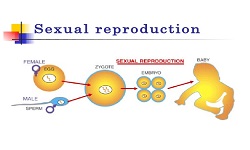
- Track 2-1Reproductive cloning Biotechnology
- Track 2-2Reproductive Toxicology
Bioremediation is a term used in biotechnology which is helping in cleaning the environment. It’s a process in which the microorganisms or their enzymes are used to clean up environment which is contaminated. With the help of microorganisms certain compounds that are contaminating the environment are degraded.it is one of the solutions that are used to reduce the pollution. There are 2 types of bioremediation. In Biodegredation organic compounds are degraded or broken down with the help of microorganisms. The organic compound that is degraded is usually the animal and plant waste which is converted into certain elements that are returned to the environment and are used again usually by plants. The artificial compounds may also be bio degraded but these compounds must resemble the animal or plant waste or organic compounds. With the help of this biodegradation the elements or the nutrients are returned to the environment. It is a very important process. Usually the materials like certain plastics are manufactured focusing on the aspect that it should be biodegradable which can be degraded easily into simpler compounds. Biomass is an industry term for getting energy by burning wood, and other organic matter. Burning biomass releases carbon emissions, around a quarter higher than burning coal, but has been classed as a "renewable" energy source in the EU and UN legal frameworks, because plants can be regrown. Bioenergy is renewable energy made available from materials derived from biological sources. Biomass is any organic material which has stored sunlight in the form of chemical energy.
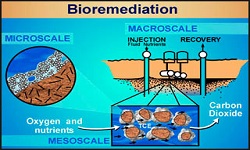
- Track 3-1Xenobiotic
- Track 3-2Bio-stimulation
- Track 3-3Co-metabolism in biodegradation
- Track 3-4Factors Affecting Biodegradation
Environmental biotechnology is biotechnology that is applied to and used to study the natural environment. Environmental biotechnology could also imply that one try to harness biological process for commercial uses and exploitation. The International Society for Environmental Biotechnology defines environmental biotechnology as "the development, use and regulation of biological systems for remediation of contaminated environments (land, air, water), and for environment-friendly processes.



- Track 4-1Biomarker
- Track 4-2Bioenergy
- Track 4-3Biotransformation
- Track 4-4Bioremediation and Biodegradation
Aquaculture and Marine Biotechnology is the use of science and engineering for the development of diagnostics, culture technology in non-traditional species and production of vaccines, Marine pharmaceuticals, biomaterials, bio-adhesives, bio-flocculent, bio-surfactants, medical implants. By attending the conference, you can learn new feed development, fish nutrition, breeding and reproduction, value addition for enhancement of aquaculture productivity, biopolymers, bio-plastics, Novel enzymes, Biosensors and Bioremediation. Join us to know more regarding this topic at Biotechnology Congress.

- Track 5-1Major diseases in aquaculture
- Track 5-2Marine extremophiles
- Track 5-3Fish transgenics for therapeutic
Animal biotechnology can improve an animal’s impact on the environment using molecular biology techniques to genetically engineer animals to improve their suitability for agriculture, industrial and pharmaceutical applications. Animal biotechnology has the wide range of applications including creating transgenic animals, using gene knock out technology to make animals with a specific inactivated gene, use of animal organs in humans to enhances the ability to detect, treat and prevent diseases. To know more about the latest innovations and techniques that have been advanced in animal biotechnology engage with us at biotechnology congress.

- Track 6-1Animal cell cultures
- Track 6-2Genome sequencing analysis
- Track 6-3Transgenic animal models
Food and Nutritional Biotechnology
Recently many advances in food industry represent the great role of food biotechnology achieved with the application of technology such as food preservation, food processing, canning, fermentation and modification of genes of plants, animals and microorganisms to reach current market level. Nutritional biotechnology describes nutrition process as well as the components of food, the balance of nutrition in food and their reaction in health and improves global food security that would interest in both the developing and developed countries. Learn more about the importance of nutritional biotechnology and its techniques join us at biotechnology Congress, at Frankfurt, Germany.

- Track 7-1Addressal of Vitamin B12 deficiency
- Track 7-2Probiotics for holistic health
- Track 7-3Food safety and allerginicity
- Track 7-4Nutriepigenomics
Stem cell biotechnology is an innovative field of Science Research and technology that develops therapeutics through manipulation of stem cells that is useful in regenerative medicine. stem cell technology offers hope of effective treatment for a variety of malignant and non-malignant diseases. You can understand current research topics on stem cells, types of stem cell such as hematopoietic and non-hematopoietic stem cells, techniques used in stem cell transplantation, tissue regeneration and stem cell banking. The stem cell biotechnology session in Biotechnology Congress will deliver novel therapeutic techniques and advancements in stem cell biotechnology.

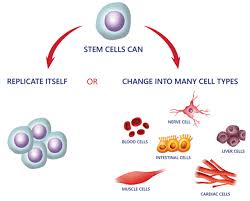
- Track 8-1Stem Cell Transplantation
- Track 8-2Human Stem Cell and Regenerative Medicine
- Track 8-3Plant Stem Cells & Veterinary Stem Cells and their Applications
Genomics attempts to make use of the vast wealth of data produced by genomics projects to describe gene and protein function. Proteomics deals with the study of proteomes and their functions. This session will discourse about the genomic approaches for the enhancement of quality characteristics in the crop plant, analysis and characterization of proteins and metabolites, transcriptomics, genome editing, gene therapy. Proteomics approaches for the protein-protein interaction, mass spectrometric and computational techniques. Utilize this Biotechnology Congress as the best stage to know more about the recent advances in biotechnology in an efficient manner.

- Track 9-1Structural genomics & Functional genomics
- Track 9-2Applications of genomics & Structural proteomics
- Track 9-3Proteomics for systems biology
- Track 9-4Human plasma proteome
The applied biotechnology major deals with the scientific background and laboratory experience necessary for the biotechnology and pharmaceutical industries, or for advanced study in the applications of biotechnology and molecular biology for the use and improvement of plants, animals, and micro-organisms. In addition, it can be to prepare for professional programs in medicine. Multi discipline science of interest in chemistry, biotechnology, microbiology. This interdisciplinary major brings together areas of study such as animals, food science, forestry, entomology, and plants to improve the knowledge and skills necessary to use biotechnology for the improvement of plants, animals, and microorganisms. Gaining theoretical as well as hands-on knowledge in the areas of molecular biology, structural biology and biotechnology furthermore, studies in the areas of protein engineering, synthetic biology and molecular biotechnology for renewable energy. Thanks to the courses in project management, marketing and entrepreneurship, one will also gain insight into business management and learn how projects are planned and carried out in the bio¬technology industry.
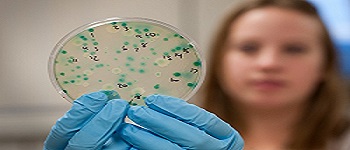
- Track 10-1Applied Microbiology
- Track 10-2Microbiology
- Track 10-3Molecular Biotechnology
- Track 10-4Synthetic Biology
 National And International Level Biosafety Regulations In most of developing countries, biosafety regulation is still in its infancy. Appropriate biosafety regulations are one of the prerequisites for a successful transfer of biotechnology to and, among developing countries. Important issues in the debate on biotechnology regulation are the uplifting of field trials, systematising of regulations, and capacity development in developing countries. The regulation of biosafety is a tool for the safe deployment of biotechnology applications into the environment. It is rather a specialised form of Environmental Impact Assessment (EIA), focussing on the biological consequences of applying Genetically Modified Organisms (GMOs). As a part of EIA, the nature of the organism, the environment in which the organism is to be released, and the interaction of such species, with reference to intraspecific and interspecific are to be analysed. Field trials constitute a major part of the transgenic plants impact assessments, however, biosafety concerns all Genetically Modified Organisms (GMOs). TRIALS ON–FIELD Among several industrialized countries, biosafety regulations have been implemented since the mid 1980s; however, there are significant differences among some of these countries. Good experience has been established, both in the regulatory process as well as in analysing the environmental impact of transgenic crops through small demonstration trials.
National And International Level Biosafety Regulations In most of developing countries, biosafety regulation is still in its infancy. Appropriate biosafety regulations are one of the prerequisites for a successful transfer of biotechnology to and, among developing countries. Important issues in the debate on biotechnology regulation are the uplifting of field trials, systematising of regulations, and capacity development in developing countries. The regulation of biosafety is a tool for the safe deployment of biotechnology applications into the environment. It is rather a specialised form of Environmental Impact Assessment (EIA), focussing on the biological consequences of applying Genetically Modified Organisms (GMOs). As a part of EIA, the nature of the organism, the environment in which the organism is to be released, and the interaction of such species, with reference to intraspecific and interspecific are to be analysed. Field trials constitute a major part of the transgenic plants impact assessments, however, biosafety concerns all Genetically Modified Organisms (GMOs). TRIALS ON–FIELD Among several industrialized countries, biosafety regulations have been implemented since the mid 1980s; however, there are significant differences among some of these countries. Good experience has been established, both in the regulatory process as well as in analysing the environmental impact of transgenic crops through small demonstration trials.

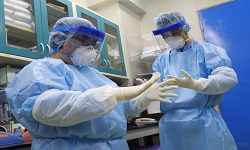

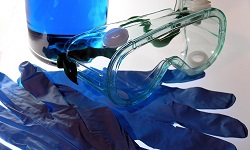
- Track 11-1Cartagena protocol
- Track 11-2Bio safety
The societal impact of the genetic engineering revolution is only beginning to be felt in the marketplace, and most molecular biologists agree that the biotechnology industry is only in its infancy. Because of the need for substantial investment of venture capital for research and development of new products, and the long time and additional capital required to bring a product to market, many new companies have struggled and remained small. Many also have folded or have been acquired by larger companies. However, as more products are approved by federal regulatory agencies and begin to yield profits for the companies involved, it is likely that this industry will mature and expand significantly to provide excellent opportunities for students with training in the biological sciences and chemistry. Industries that are especially large and active developers of biotechnology include the pharmaceutical industry, food and natural products processing industries and agricultural (plant and animal) industries.
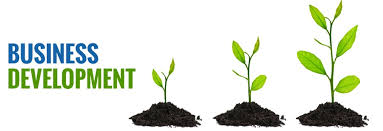
Biomaterials are those materials which are usually made of multiple components that interact with biological system. Biomaterials are normally used in medical application like drug delivery, therapeutics, and diagnostics to replace a natural function. The most commonly used biomaterials are polymers. All biomaterials meet certain criteria and regulatory requirements before they can be qualified for use in medical applications. Biomaterial Science has a broad scope that covers the fundamental science of biomaterials through to their biomedical applications.
Regenerative medicine is the branch of medicine that develops methods to repair or replace damaged or diseased cells, organs or tissues. Regenerative medicine includes the generation and use of therapeutic stem cells, tissue engineering and the production of artificial organs. One of the greatest needs for regenerative therapy is in the field of whole organ replacement. The first bone marrow and solid-organ transplants were done years ago. But advances in developmental and cell biology, immunology, and other fields are new opportunities to refine existing regenerative therapies and develop new ones.
- Track 13-1stem cell
- Track 13-2Antibody immobilization
- Track 13-3Vascular regeneration
Chemistry is the study of matter, its properties, how and why substances combine or separate to form other substances, and how substances interact with energy. Many people think of chemists as being white-coated scientists mixing strange liquids in a laboratory, but the truth is we are all chemists. Understanding basic chemistry concepts is important for almost every profession. Chemistry is part of everything in our lives.
Systems biology is the computational and mathematical modeling of complex biological systems. It is a biology-based interdisciplinary field of study that focuses on complex interactions within biological systems, using a holistic approach (holism instead of the more traditional reductionism) to biological research.

- Track 14-1Antigen processing and presentation
- Track 14-2Immunopeptidomics
Intellectual property protection for biotechnology is currently in a state of flux. Whilst it used to be the case that living organisms were largely excluded from protection, attitudes are now changing and increasingly biotechnology is receiving some form of protection. These changes have largely taken place in the USA and other industrialized countries, but as other countries wish to compete in the new biotechnological markets, they are likely to change their national laws in order to protect and encourage investment in biotechnology.
Protein engineering is varying the structure of a protein to perk up or amend its properties. This unit summarizes concepts for protein engineering using rational design, directed evolution, and combinations of them. Different strategies are offered for identifying the best mutagenesis method, how to make out desired variants by screening or selection. This should enable researchers to choose the most hopeful tools to solve their protein engineering challenges. It is the process of mounting useful or valuable proteins. It is a young discipline, through much research taking place into the sympathetic of protein folding and recognition for protein design principles. There are two general strategies for protein engineering, 'rational' protein design and directed evolution. Using computational methods, a protein with a novel fold has been designed. The engineering of fusion proteins has yielded rilonacept, a pharmaceutical which has secured FDA approval for the healing of cryopyrin associated periodic syndrome. The prospects for protein engineering, including the roles of x-ray crystallography, chemical synthesis of DNA, computer modeling of protein structure and folding. It is now possible to stab to modify many different properties of proteins by combining information on crystal structure and protein chemistry with artificial gene synthesis. Such techniques tender the potential for altering protein structure and function in ways not possible by any other method.
Bioinformatics refers to the computational ways of analysis, examination, overseeing, and storage of natural information. Bioinformatics include the examination of organic data utilizing PCs and measurable systems, the exploration of creating and using PC databases and calculations to quicken and improve natural research. Bioinformatics is utilized as a part of breaking down genomes, proteomes (protein arrangements), three-dimensional demonstration of biomolecules and biologic systems etc.
- Track 17-1Immuno- and Chemo-informatics
- Track 17-2Glyco Bioinformatics
- Track 17-3Signal processing
Cell biology (formerly called cytology, from the Greek κυτος, kytos, "vessel") is a branch of biology that studies the different structures and functions of the cell and focuses mainly on the idea of the cell as the basic unit of life. Cell biology explains the structure and organization of the organelles they contain. It includes the physiological properties, metabolic processes, signaling pathways, life cycle, and interactions with their environment. This is done both on a microscopic and molecular level as it encompasses prokaryotic cells and eukaryotic cells. Knowing the components of cells and how cells work is fundamental to all biological sciences; it is also essential for research in bio-medical fields such as cancer, and other diseases. Research in cell biology is closely related to genetics, biochemistry, molecular biology, immunology, and developmental biology.
Immunology is a branch of biology that covers the study of immune systems in all organisms. Immunology charts, measures, and contextualizes the: physiological functioning of the immune system in states of both health and diseases; malfunctions of the immune system in immunological disorders (such as autoimmune diseases, hypersensitivities, immune deficiency, and transplant rejection); the physical, chemical and physiological characteristics of the components of the immune system in vitro, in situ, and in vivo. Immunology has applications in numerous disciplines of medicine, particularly in the fields of organ transplantation, oncology, virology, bacteriology, parasitology, psychiatry, and dermatology
Bioinformatics is the application of computer technology for the management of biological information. Biological and genetic information can be gathered, stored, analyzed and integrated by computers for further gene-based drug discovery and development. This scientific field is essential for understanding human diseases and identifying new molecular targets for drug discovery by using genomic information. Biosensors are analytical devices which can be used for the detection of an analyte by combining a biological component with a physicochemical detector. Generally, the main purpose of a biosensor is to quickly test a sample for the presence of a target analyte. Biomolecules are generally used as the recognition component for the biosensor.
Biochemistry is the branch of science that explores the chemical processes within and related to living organisms. It is a laboratory based science that brings together biology and chemistry. By using chemical knowledge and techniques, biochemists can understand and solve biological problems.
Biochemistry focuses on processes happening at a molecular level. It focuses on what’s happening inside our cells, studying components like proteins, lipids and organelles. It also looks at how cells communicate with each other, for example during growth or fighting illness. Biochemists need to understand how the structure of a molecule relates to its function, allowing them to predict how molecules will interact.
Biochemistry covers a range of scientific disciplines, including genetics, microbiology, forensics, plant science and medicine. Because of its breadth, biochemistry is very important and advances in this field of science over the past 100 years have been staggering. It’s a very exciting time to be part of this fascinating area of study.


- Track 20-1Animal biochemistry.
- Track 20-2Plant biochemistry.
- Track 20-3Molecular biology.
- Track 20-4Cell biology.
- Track 20-5Cell biology.
- Track 20-6Metabolism.
- Track 20-7Immunology.
- Track 20-8Genetics
- Track 20-9Enzymology
Biophysics has been critical to understanding the mechanics of how the molecules of life are made, how different parts of a cell move and function, and how complex systems in our bodies—the brain, circulation, immune system, and others— work. Biophysics is a vibrant scientific field where scientists from many fields including math, chemistry, physics, engineering, pharmacology, and materials sciences, use their skills to explore and develop new tools for understanding how biology—all life—works.
Physical scientists use mathematics to explain what happens in nature. Life scientists want to understand how biological systems work. These systems include molecules, cells, organisms, and ecosystems that are very complex. Biological research in the 21st century involves experiments that produce huge amounts of data. How can biologists even begin to understand this data or predict how these systems might work?
This is where biophysicists come in. Biophysicists are uniquely trained in the quantitative sciences of physics, math, and chemistry and they are able tackle a wide array of topics, ranging from how nerve cells communicate, to how plant cells capture light and transform it into energy, to how changes in the DNA of healthy cells can trigger their transformation into cancer cells, to so many other biological problems.
kinesiology is the scientific study of human or non-human body movement. Kinesiology addresses physiological, biomechanical, and psychological dynamic principles and mechanisms of movement. Applications of kinesiology to human health (i.e., human kinesiology) include biomechanics and orthopedics; strength and conditioning; sport psychology; methods of rehabilitation, such as physical and occupational therapy; and sport and exercise. Studies of human and animal motion include measures from motion tracking systems, electrophysiology of muscle and brain activity, various methods for monitoring physiological function, and other behavioral and cognitive research techniques.
Medical biotechnology refers to a medicinal or diagnostic product or a vaccine that consists of or has been produced in living organisms and may be manufactured via recombinant. Medical Biotechnology has a tremendous impact on meeting the needs of patients and their families as it not only encompasses medicines and diagnostics that are manufactured using a biotechnological process, but also gene and cell therapies and tissue engineered products. Today, the majority of innovative medicines, whether manufactured using biotechnology or via a chemical synthesis like a traditional small molecule medicine, as well as many diagnostic products, are made available by applying modern biotechnology in their development and manufacturing.

- Track 23-1Stem Cell Banking
Pharmaceutical biotechnology is a comparatively new and growing field in which the principles of biotechnology are applied to the designing and production of drugs. Pharmaceutical companies manufacture and market drugs, livestock feed supplements, vitamins, and a host of other products. Consistently, Pharmaceutical companies are one of the most profitable industries in the U.S. with sales exceeding $320 billion per year.
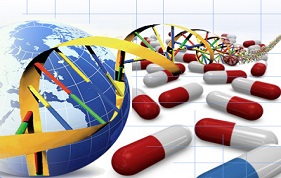
- Track 24-1Drug development process
- Track 24-2Biologics & biopharmaceuticals
- Track 24-3Biologics & biopharmaceuticals
- Track 24-4Product Analysis
- Track 24-5Biomedical Engineering
Biomedical Engineering and Bio-Engineering
Biomedical engineering, or bioengineering, is the application of engineering principles to the fields of biology and health care. Bioengineers work with doctors, therapists and researchers to develop systems, equipment and devices in order to solve clinical problems.
Biomedical engineers have developed a number of life-enhancing and life-saving technologies. These include:
• Prosthetics, such as dentures and artificial limb replacements.
• Surgical devices and systems, such as robotic and laser surgery.
• Systems to monitor vital signs and blood chemistry.
• Implanted devices, such as insulin pumps, pacemakers and artificial organs.
• Imaging methods, such as ultrasound, X-rays, particle beams and magnetic resonance.
• Diagnostics, such as lab-on-a-chip and expert systems.
• Therapeutic equipment and devices, such as kidney dialysis and transcutaneous electrical nerve stimulation (TENS).
• Radiation therapy using particle beams and X-rays.
• Physical therapy devices, such as exercise equipment and wearable tech.
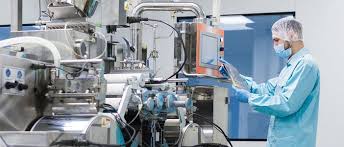
Nano biotechnology is the multidisciplinary subject which combines engineering principles and molecular biology. Nano biotechnology has the potentiality to create biological and biochemical materials and devices at molecular and atomic levels. It presents new class of multifunctional systems and devices for biological analysis with better sensitivity and much specificity. Nano biotechnology subsumes the application of the tools and processes of nanotechnology to control biological systems. The Nano biotechnology includes new techniques such as 3D imagining live cells, real-time imaging, and single molecule imaging bio analytical microarrays and biosensors and microfluidic devices. This discipline helps to indicate the subsume of biological research with various fields of nanotechnology. Concepts that are enhanced through Nano biology comprises: Nano devices (such as biological machines), nanoparticles, and Nano scale phenomena that available within the discipline of nanotechnology. This technical approach to biology allows scientists to envisage and create systems that can be used for biological research. Biologically inspired nanotechnology uses biological systems as the encourisation for technologies not yet created. However, as with nanotechnology and biotechnology, bio nanotechnology does have many potential ethical issues associated with it.
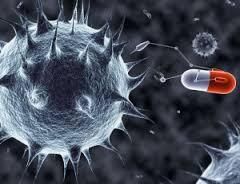
For thousands of years, microorganisms have been used to supply products such as bread, beer and wine. A second phase of traditional microbial biotechnology began during World War I and resulted in the development of the acetone-butanol and glycerol fermentations, followed by processes yielding, for example, citric acid, vitamins and antibiotics. In the early 1970s, traditional industrial microbiology was merged with molecular biology to yield more than 40 biopharmaceutical products, such as erythropoietin, human growth hormone and interferons. Today, microbiology is a major participant in global industry, especially in the pharmaceutical, food and chemical industries.
Biotechnology as the name indicates that based on technology the progression of biology. Nowadays the whole world relies on technologies, into that where biology is our Base of life, & when scientists are using technology in biology it is doing wonders. Biotechnology can be used in several fields and sectors. For example in medical therapy, in war-fields (Bio--weapons), In agricultural biology, in reproductive biology, in cell biology, in genetic engineering. There is endless ways in which biotechnology is being used. It is a great combination which actually has the ability to change the impossible into possible.

Industrial Biotechnology and Fermentation techniques
Industrial or white biotechnology uses enzymes and micro-organisms to make bio based products in sectors such as chemicals, food and feed, detergents, paper and pulp, textiles and bioenergy. The application of industrial biotechnology has been proven to make significant contributions towards mitigating the impacts of climate change in these and other sectors. In addition to environmental benefits, biotechnology can improve industry’s performance and product value and, as the technology develops and matures, white biotechnology will yield more and more viable solutions for our environment. These innovative solutions bring added benefits for both our climate and our economy.
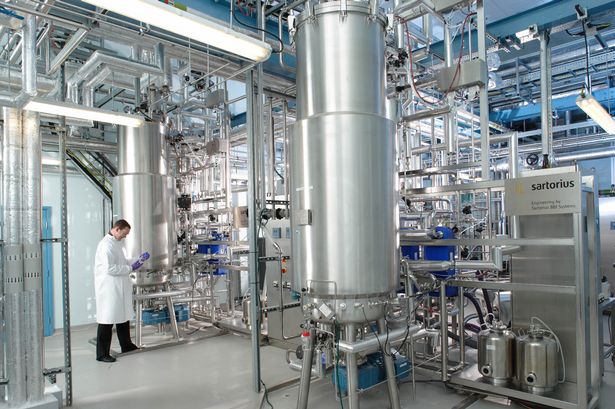
Genetic Engineering and rDNA Technology
Genetic engineering is the manipulation of an organism's genome using biotechnology Principles. It is a set of technologies used to change the genetic makeup of cells, including the transfer of genes within and across species domains for the production of improved or novel organisms. Genetic engineering has applications in medicine, research, industry and agriculture and can be used on a wide range of plants, animals and microorganisms. Tissue engineering is the use of a integration of cells, engineering and materials principles, and suitable biochemical and physicochemical factors to improve or replace biological tissues.
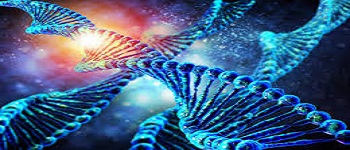
Agricultural biotechnology is the area of biotechnology involving applications to agriculture. Agricultural biotechnology has been practiced for a long time, as people have sought to improve agriculturally important organisms by selection and breeding. An example of traditional agricultural biotechnology is the development of disease-resistant wheat varieties by cross-breeding different wheat types until the desired disease resistance was present in a resulting new variety. Modern agricultural biotechnology improves crops in more targeted ways. The best known technique is genetic modification, but the term agricultural biotechnology (or green biotechnology) also covers such techniques as Marker Assisted Breeding, which increases the effectiveness of conventional breeding. Whatever the particular technology used, the crops may be destined for use for food, biomaterials or energy production. Genetic modification means that existing genes are modified or new genes included to give plant varieties desirable characteristics, such as resistance to certain pests or herbicides, or for vitamin fortification. Because only a few genes with known traits are transferred, GM methods are more targeted and faster than traditional breeding. Biotechnology has helped to increase crop productivity by introducing such qualities as disease resistance and increased drought tolerance to the crops. Plant biotechnology is the technique used to manipulate the plants for specific needs or requirement. In traditional process seed is the major source for germinating a new plant but the advance method is independent that combines multiple needs to get the required traits.
- Track 31-1Traditional breeding
- Track 31-2Mutagenesis
- Track 31-3Protoplast fusion
- Track 31-4Transgenic
- Track 31-5Agronomic traits
- Track 31-6Herbicide tolerance

